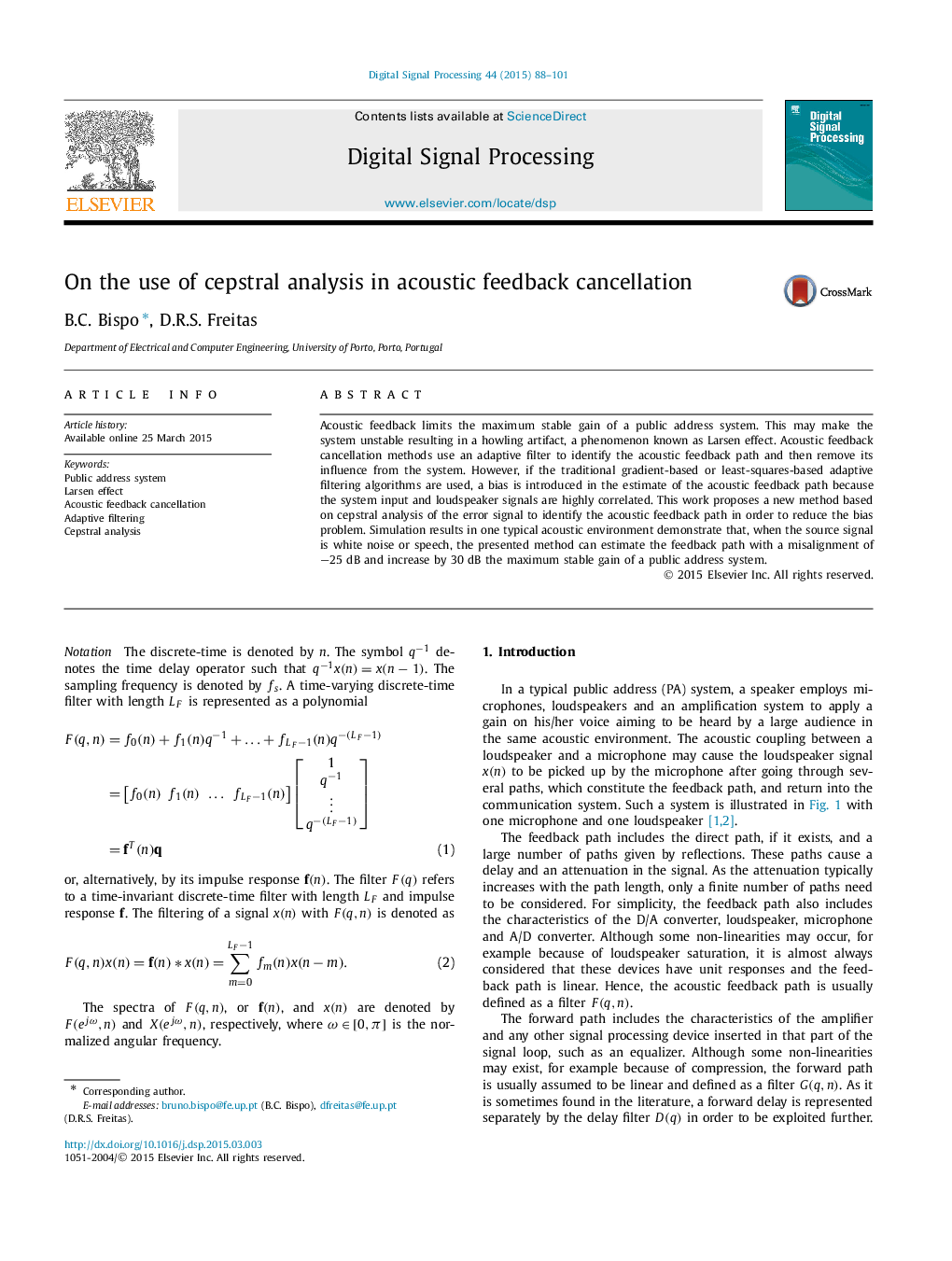| Article ID | Journal | Published Year | Pages | File Type |
|---|---|---|---|---|
| 564513 | Digital Signal Processing | 2015 | 14 Pages |
Acoustic feedback limits the maximum stable gain of a public address system. This may make the system unstable resulting in a howling artifact, a phenomenon known as Larsen effect. Acoustic feedback cancellation methods use an adaptive filter to identify the acoustic feedback path and then remove its influence from the system. However, if the traditional gradient-based or least-squares-based adaptive filtering algorithms are used, a bias is introduced in the estimate of the acoustic feedback path because the system input and loudspeaker signals are highly correlated. This work proposes a new method based on cepstral analysis of the error signal to identify the acoustic feedback path in order to reduce the bias problem. Simulation results in one typical acoustic environment demonstrate that, when the source signal is white noise or speech, the presented method can estimate the feedback path with a misalignment of −25dB and increase by 30dB the maximum stable gain of a public address system.
